The Case for Moving Federal Agencies to America
It would help make Washington, DC more affordable and liveable, and it would put agencies closer to their constituents and where they're accessible and needed. It's a win-win.
You’re about to discover why I could never be elected to public office, especially in northern Virginia. I’m about to propose a radical change that will send shudders up and down the spines of every political figure in my home region.
Not that many of them read my Substack (some do!), and this is not a new idea. But it is an idea whose time has come.
It’s time to relocate most of our federal cabinet and other agencies to the United States. That is, outside Washington, DC’s delusional and dysfunctional beltway. And I do mean most of them. Agriculture, Veterans Affairs, Health and Human Services, Transportation, Commerce, Environmental Protection, Energy, and Interior. The Federal Bureau of Investigation. Maybe more.
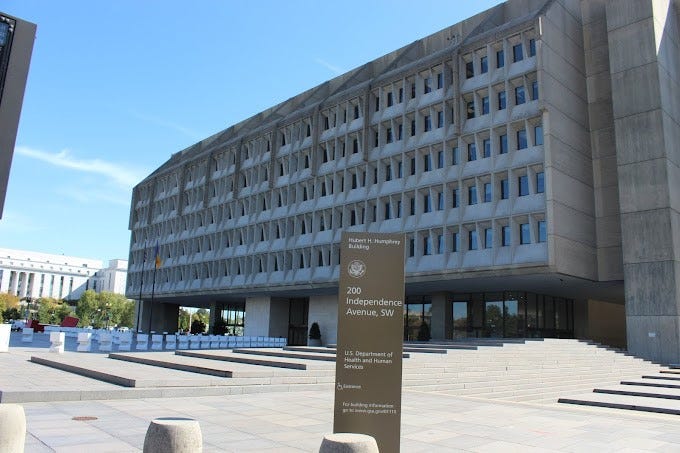
In fairness, I don’t live in “The Swamp,” as President Trump and his loyal subordinates describe the greater Washington, DC area. That area encompasses the counties where federal workers reside and commute to, or work remotely from, various regional offices. As my church pastor says, we live on “the edge” of the swamp in western Loudoun County, where I have more horses, alpacas, goats, and cows for neighbors than people or federal agencies. Or federal workers, although the new Undersecretary of the Navy is a neighbor. He has a long commute.
As Tina Fey might say, I can see West Virginia from my house. I can also see Mount Weather, the Federal Emergency Management Agency’s “Continuity of Government” facility, located deep within Shenandoah Mountain and less than 6 miles from my home. It’s where congressional leaders were flown to during 9/11. Watching the occasional unmarked helicopter fly fast and low over my house as it approaches this secure facility is fun. If I ever see a bunch of them coming this way, I know the gig is up, and I’d better find underground shelter. It’s not a big secret - you can find it on Google Maps, and many websites and YouTube videos describe it.
This 73-mile-long ridge serves as the eastern border of the famous and historic Shenandoah Valley, the former breadbasket of the Confederacy. Back then, Confederate troops moved toward Maryland, to Antietam and Gettysburg, along the western shadows of the mountain along the Shenandoah River. In contrast, Union troops converged near my home on the eastern side of the mountain. They advanced north into Maryland and Pennsylvania, engaging in two of the most significant battles of the Civil War. There’s a lot of history here, and I love it.
Today, the Appalachian Trail traverses the summit of Shenandoah Mountain, where hikers meander along the famous 2,100-mile trail from northern Georgia to Maine, with occasional fabulous views of the Valley to their west and the Catoctin Ridge and Loudoun Valley to their east. But most won’t even know they’re passing by one of the nation’s top-secret facilities. Maybe the Russian, Mandarin, and Farsi-speaking hikers will.
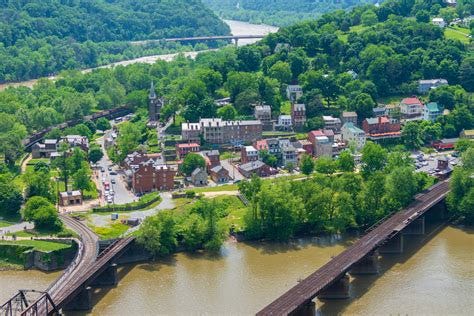
Of course, not all federal agencies are located in Washington, DC. The Pentagon is located across the Potomac River in Arlington, Virginia. The Central Intelligence Agency is headquartered in McLean, Virginia. The Centers for Disease Control are in Atlanta, Georgia. The Department of Agriculture’s Federal Food and Nutrition Service is located in Alexandria, Virginia, just off Interstate 395 in leased office space. The Federal Bureau of Investigation was supposed to relocate to a brand-new headquarters in Greenbelt, Maryland, just outside the region’s infamous 61-mile-long I-495 beltway, symbolizing the region’s separation from reality.
Speaking of the late U.S. Senator and Majority Leader Robert C. Byrd, West Virginia’s legendary "pork king," many federal workers and agencies have made their way to the Mountaineer State. The FBI has a significant presence and employs thousands of workers in Clarksburg, West Virginia. Due to its affordability, Highway 9, which runs from Harper’s Ferry and Charles Town, WV (named after George Washington’s brother), is a traffic nightmare during rush hour as scores of West Virginian federal workers commute to Beltway Bandit federal contractor offices in Tyson’s Corner, Virginia, or even to DC. Scores of others take Maryland Area Rapid Transit trains from places like Shepherdstown, WV, and Brunswick, Maryland, towards Union Station near the Capitol.
The National Security Agency (NSA) has offices and its own exit on the Washington-Baltimore Parkway (also known as the Gladys Noon Spellman Parkway), which parallels Interstate 95, near Fort Meade.
I’ll bet your bottom dollar that the new FBI headquarters won’t be built, at least while Donald Trump is President. This is despite new FBI director Kash Patel’s “promise” to turn the current aging edifice between the White House and the Capitol into a future “Museum of the Deep State.” That’s one museum I’d love to visit.
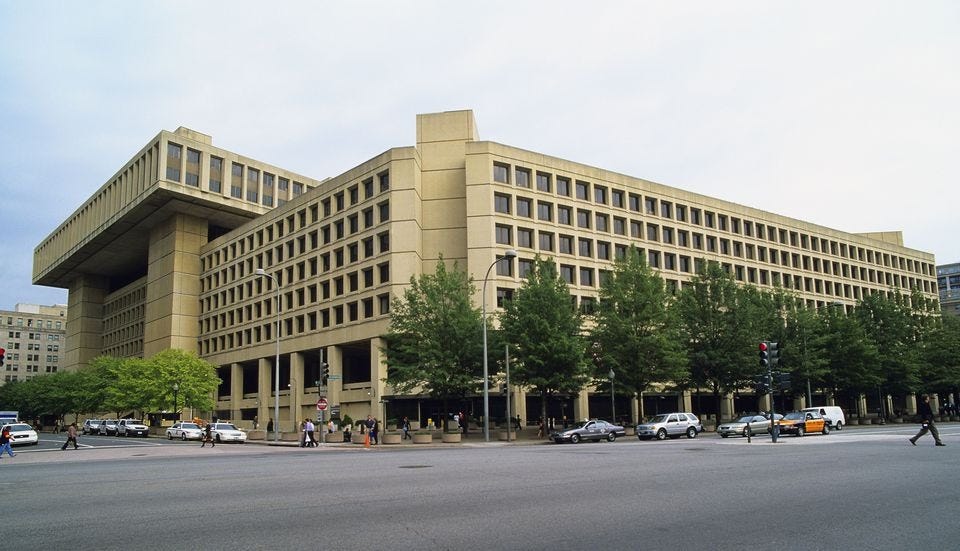
Let’s face the obvious. Washington, DC, is an incestuous, expensive, insulated, and power-mad city where federal agencies and workers have lost sight of their raison d’etre. They’ve grown comfortable with their lifestyles, high incomes, and proximity to power. They live and prosper in an insular bubble.
It’s time to move them closer to the people they’re supposed to serve.
This is not a new idea. Whenever someone suggests moving a federal agency - any federal agency, but especially those within the Department of Interior - to real America, it creates a firestorm. Media reports that the costs outweigh the benefits, or the opposition of employees who would be forced to separate from family connections in the area.
I get it. I’ve lived or worked in this area for most of my life. The DC area is pretty special. It boasts an incredible history, vibrant communities, fabulous restaurants, wineries, breweries, theaters (the Kennedy Center is tops, but hardly alone), and terrific outdoor activities, from the W&OD and Mount Vernon trails to Great Falls National Park. And don’t forget the museums or Arlington National Cemetery. Millions visit the region every year.
The average cost of a single-family home in northern Virginia is also over $1 million. Townhouses range from $600,000 to $700,000 or more, and condos start around $350,000. Monthly rents are well into the thousands of dollars.
You can find a lovely single-family house for a fraction of the cost in Peoria, Illinois, or Oklahoma City, Oklahoma. Both communities and their regions have almost as much to offer, from lakes to hiking and biking trails to cultural events, as Washington, DC. The people are much more sociable, and the pace of life is much more civilized. In most states, taxes and the cost of living are significantly lower than those in the Washington, D.C., region.
So, where should the federal cabinet and other agencies be relocated? I have recommendations.
First, there are significant upfront costs associated with relocating these agencies into new surroundings. I get that, but the longer-term benefits, especially for federal employees, are significant. New buildings with the latest infrastructure and technology will improve efficiency. There’s also the cost of dismantling or converting existing dinosaur buildings in Washington, DC, including the Department of Agriculture, which prison architects designed and built during the Great Depression.
That said, I have ideas on where to relocate major federal agencies. It’s not a comprehensive list. Perhaps you have other agencies and ideas. Please feel free to share your views.
Let me start with the agencies that I would keep in Washington, DC. Hopefully, the reasons will be obvious: the Pentagon and the Department of Defense, the Department of State, our national intelligence (NSA, CIA), and law enforcement agencies (Department of Justice, FBI). Those entities require close coordination and proximity to the presidency and the White House, including face-to-face conversations.
The Department of Transportation. Oklahoma City, Oklahoma.
Okay, I’m biased here. I’m an Oklahoman by birth and heritage and a former Deputy Assistant Secretary of Transportation for Public Affairs. I know and love the agency, which is among our federal agencies' most non-partisan and practical. Oklahoma is a preeminent aviation center and home to the Mike Monroney Aeronautical Center, named after the former U.S. Senator. Oklahoma is a central hub for trucking in America, situated at the intersection of three major interstate highways: I-35, I-44, and I-40. It’s an ideal location for the US Department of Transportation. It is an intermodal hub.
Department of Commerce: Dallas/Ft. Worth, Texas
Where else would you find an agency dedicated to advancing free enterprise and trade than in the Lone Star State? Yes, the agency has functions like the National Oceanic and Atmospheric Administration (NOAA). Where better to place it than near tornado alley, which runs from Wichita Falls, Texas, north towards Oklahoma City, Oklahoma? Other functions, such as tourism and export promotion, can be done from anywhere, but why not Texas?
Environmental Protection Agency: Baton Rouge, Louisiana
“Cancer Alley” is a thing. It’s an 85-mile stretch of petrochemical plants that border the Mississippi River from New Orleans to the Louisiana state capital of Baton Rouge (‘Red stick’). Many reports have documented the high rates of cancer in the region, especially among poor African American communities. Since the EPA is supposed to protect our environment and health, perhaps they could relocate to this region and live amidst the issue—and, maybe, finally help resolve it.
Department of Energy: Las Vegas, Nevada
This is, admittedly, a political trade. We send a principal federal cabinet agency to Nevada in exchange for, finally, opening up the Yucca Mountain Waste Repository as a site for storing nuclear waste. While nuclear energy is safe and effective, America’s 104 atomic energy fission energy sites produce waste. Until we fix the “fusion” puzzle, we need a place to store waste from current facilities and away from scores, even hundreds, of other less secure and safe storage facilities across the country.
I’d even be okay locating the DOE at Yucca Mountain, about 80 miles outside of Las Vegas. Open up federal lands for housing development nearby. Speaking of which. . .
Department of Interior: Salt Lake City, Utah
The federal government is the largest landowner in many western states, particularly in Nevada and Utah. Many of those lands are public parks. Utah is renowned for its Mighty Five and attracts millions of visitors each year. Nearby parks include the Grand Canyon and Petrified Forest in Arizona and dozens of other monuments. It doesn’t have to be Salt Lake City. Still, Utah would be a terrific place for the US Department of the Interior and its subsidiary agencies, including the Fish and Wildlife Service, the National Park Service, the US Forest Service, and the Bureau of Land Management.
Department of Health and Human Services: Charleston, West Virginia
Few states in the nation have worse health outcomes, from drug abuse (fentanyl) to obesity, than West Virginia. Mississippi and a few other southern states have higher obesity rates, but West Virginia has many issues. Secretary Robert F. Kennedy Jr. was in Charleston this week to sign legislation introduced by Gov. Patrick Morrissey, which phases out specific artificial colors and flavors in foods for schoolchildren. Other states, including California and Virginia, have led the way.
Secretary Kennedy, noting Gov. Morrissey’s weight, fat-shamed him. He offered to serve as his personal trainer. Where else better to do that than in the same community, where he can also address fentanyl abuse and other health issues.
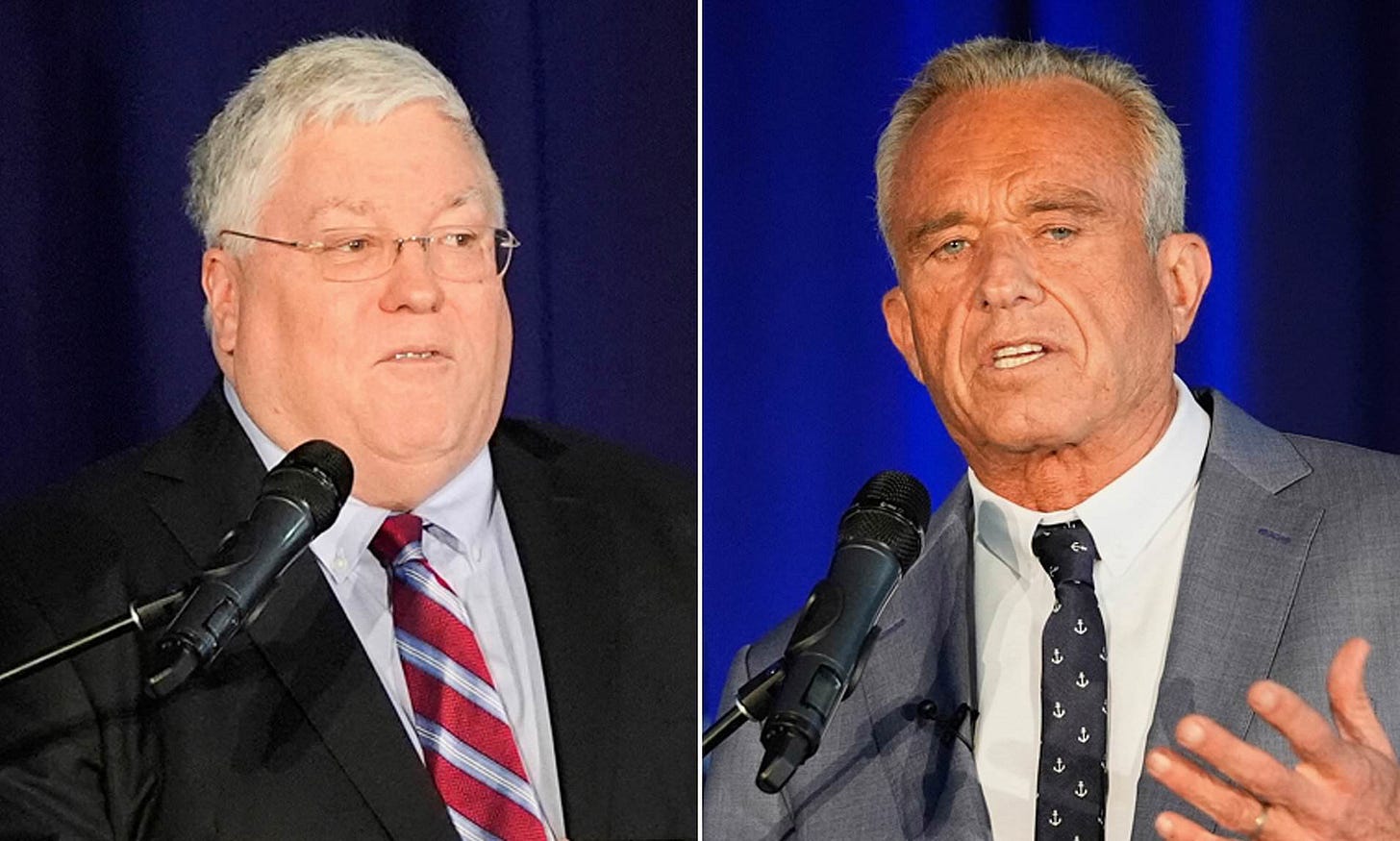
Department of Agriculture: Kansas City, MO/KS
This is a no-brainer. The Department of Agriculture should be located where farming and ranching happen. That would be the Midwest, somewhere in the Kansas, Nebraska, Iowa, and Missouri regions. Kansas City makes sense.
Not because I’m trying to cement the existing Depression-era federal policies that favor corn, soybeans, and other commodities. But let’s face it, outside of California’s San Juaquin Valley, where many of our fruits and vegetables are grown (Florida, Arizona, and Texas would like a word), most of America’s grains and protein comes from the Great Midwest. Put the USDA there.
Department of Veterans Affairs: Anywhere in Florida
Let’s face it. Not that many veterans live in the DC area. They relocate elsewhere as soon as they retire from the Pentagon or their station. Most are located in California, Texas, and Florida.
Florida, with 1.4 million veterans, has the highest concentration of veterans per capita in the US. Where else should we place a department designed to ensure their care and support?
I have other suggestions, including moving the FBI headquarters to America’s crime hellhole, Chicago, Illinois, but I get the case for keeping them close to the White House and Congress, even the courts. Chicago’s problems are essentially of its own making, thanks to the foolish choices made at the ballot box. This is something to be debated. Maybe Director Patel has thoughts.
But what do you think, America? With the advent of technology and the need to address the isolation and insularity of federal workers and agencies, do you have any better ideas or suggestions for alternative work locations?
And yes, there would be a price to pay in DC. The real estate market would go bonkers, but not as much as you might think. The region would still be home to hundreds of thousands of federal workers, including those from the FBI and the Departments of Defense and Justice. However, my traffic would improve, housing demand and prices would stabilize, and the government would become better connected with the people it should serve rather than being served by them.
I will confess to a small political advantage. Fewer government employees in northern Virginia, who vote Democratic, would improve my political environment here in Virginia.
This strikes me as a win-win for America and the Washington, DC area.





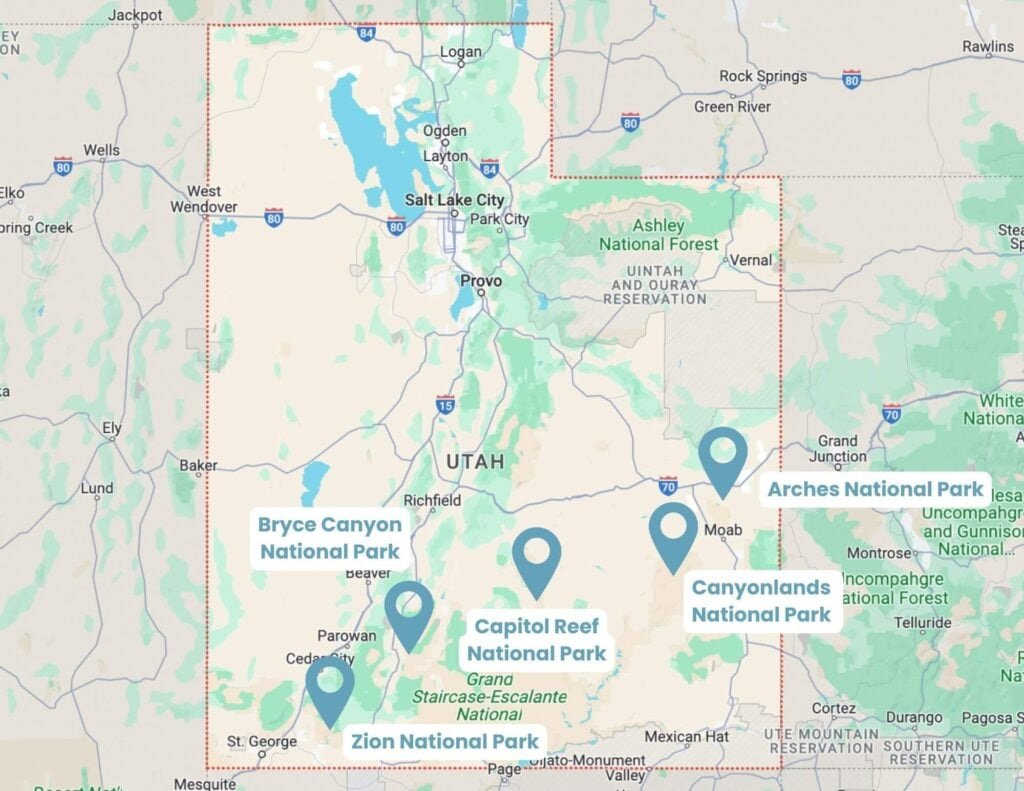
Way to make sure your shitty Loudon County exurban cookie-cutter house becomes even less desirable than it already is. 'murica!
I don't know about interior in Utah but I absolutely agree with leaving California out of the mix until we straighten things out here. I wouldn't want Sacramento's dysfunction to infect anything more than it already has.